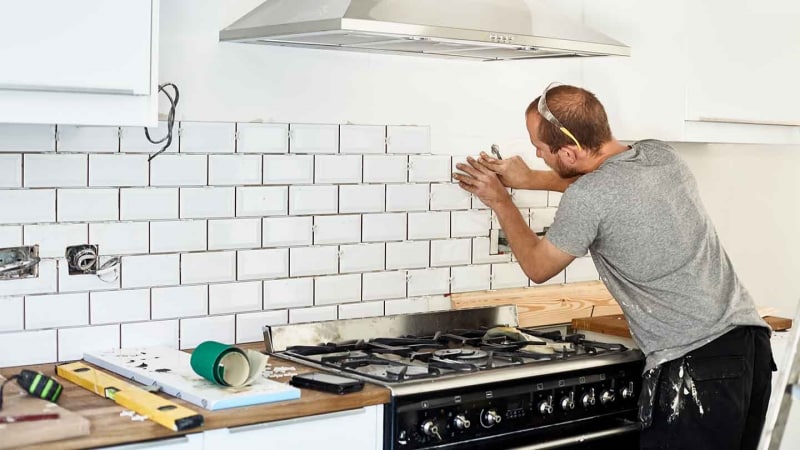VA “streamline” refinance (VA IRRRL): Definition and requirements

This article is for educational purposes only. JPMorgan Chase Bank, N.A., does not offer a VA IRRRL or VA loan refinancing. Any information described in this article may vary by lender.
Quick insights
- The VA Streamline Refinance (IRRRL) allows veterans with an existing VA loan to refinance for a lower interest rate with less paperwork and no appraisal requirement.
- To qualify, borrowers must be current on their mortgage and meet VA eligibility criteria.
- This type of refinancing may reduce monthly mortgage payments or make them more stable, but terms should be reviewed closely with a VA Home Lending Advisor.
The VA Interest Rate Reduction Refinance Loan (IRRRL) is sometimes called a VA “streamline” refinance. This can reduce monthly mortgage payments or make them more stable. The requirements are important to understand before applying.
Here’s information that may help you determine if an IRRRL is a good option. For the latest information, visit the VA’s website for IRRRLOpens overlay.
VA “streamline” refinance, IRRRL
VA “streamline” refinance refers to the Interest Rate Reduction Refinance Loan (IRRRL) offered by the Veterans Association. The loan offers a way for veterans and active-duty servicemembers to lower their mortgage interest rates. Similar to traditional refinancing, an IRRRL swaps your current loan for one with potentially lower interest or a fixed rate, rather than an adjustable-rate mortgage (ARM). However, one requirement is already having a VA-backed mortgage loan.
How does a VA IRRRL work?
The VA IRRRL replaces your existing VA loan with a new one. Refinancing your mortgage with a VA IRRRL could reduce monthly payments or make them more stable. For example:
- An IRRRL could have a lower interest rate, which would lower monthly payments.
- An IRRRL could swap an adjustable rate for a fixed rate, which could stabilize monthly mortgage payments.
An IRRRL doesn’t typically require a home appraisal, credit underwriting or income verification, hence the “streamline” label. Even if your home’s condition has changed, you can still apply for this refinancing option. Plus, you don’t need a new Certificate of Eligibility (COE), which can make the process run more smoothly. If you already have a VA-backed loan, an IRRRL this could be a smart financial move with relatively short turnaround.
VA IRRRL requirements
To qualify for a VA IRRRL, you must meet specific eligibility criteria. Here’s a general overview:
- Existing VA loan requirement: You must already have a VA-backed mortgage loan.
- Primary residence rule: The home being refinanced must be your primary residence or one you previously occupied.
- Payment history: You must have made at least six payments and meet a 210-day seasoning requirement from the date of your first payment made.
Pros and cons of VA “streamline” refinance
The VA Streamline Refinance (IRRRL) offers a more straightforward process for veterans and servicemembers to lower their mortgage rates, but like most financial decisions, applying comes with both benefits and drawbacks.
Pros
- No new COE required: Since you already have a VA loan, you won’t need to go through the process of obtaining a new COE.
- Option to switch it from an ARM to a fixed-rate mortgage: If you have an adjustable-rate mortgage, the IRRRL allows you to secure a stable, fixed interest rate for predictable payments over time.
- No home appraisal or income verification: This can help save time and money, especially for borrowers who may not meet refinance requirements for conforming loans.
Cons
- No cash-out option: The IRRRL is strictly for lowering your interest rate or switching loan types. If you need to tap into your home equity, you’ll need a different VA refinance option.
- May extend your loan term: If you refinance into a new 30-year loan, you could end up paying more in total interest over time, even if your monthly payments are lower.
- Funding fee may apply: While not the same as the fee for a VA Purchase, a funding fee is typically required for a VA IRRRL unless you qualify for an exemption.
How to get a VA IRRRL
Here’s an overview of the steps to take in order to get started. For the latest information, visit the VA’s website for IRRRLOpens overlay.
1. Check eligibility requirements
- You must already have a VA-backed home loan.
- The IRRRL must result in a lower interest rate or move you from an adjustable-rate mortgage (ARM) to a fixed-rate mortgage.
- You must live in or have previously lived in the home you’re refinancing.
2. Find a VA-approved lender
- Contact your current lender or shop around for another VA-approved lender to find the best loan terms for you.
- Not all lenders offer the same interest rates and fees, so compare options before committing.
3. Submit required documentation
While the IRRRL process is streamlined, you still need to provide information about your current VA loan and meet any additional lender-specific requirements.
4. Review loan terms prior to closing
For an IRRRL, you may need to pay a VA funding fee and additional closing costs depending on the loan terms. You might be able to roll certain costs into the new loan or pay them upfront. Once approved, your new lender will pay off your existing VA loan. Your new loan takes effect, ideally with a lower interest rate and reduced monthly payments.
The VA funding fee
The amount of this fee varies based on factors like service history and whether you’ve used a VA loan before. Some veterans, such as those with a service-connected disability, may be exempt from paying the fee. It may be a good idea to check your exemption status and calculate how the fee would fit into your refinancing plan.
In summary
A VA IRRRL may lower a VA loan mortgage rate and make monthly payments. An IRRRL is sometimes referred to as a VA “streamline” refinance because the qualification process has fewer elements than traditional refinancing. Factors like the VA funding fee and individual loan terms can impact the overall savings of refinancing your mortgage.
To ensure you’re making the right financial decision for you, it’s important to discuss your options with a VA Home Lending Advisor. They can help you understand eligibility requirements, potential cost savings and whether you qualify for a funding fee exemption. Taking the time to review your refinancing options could lead to long-term financial benefits and a more manageable mortgage.



